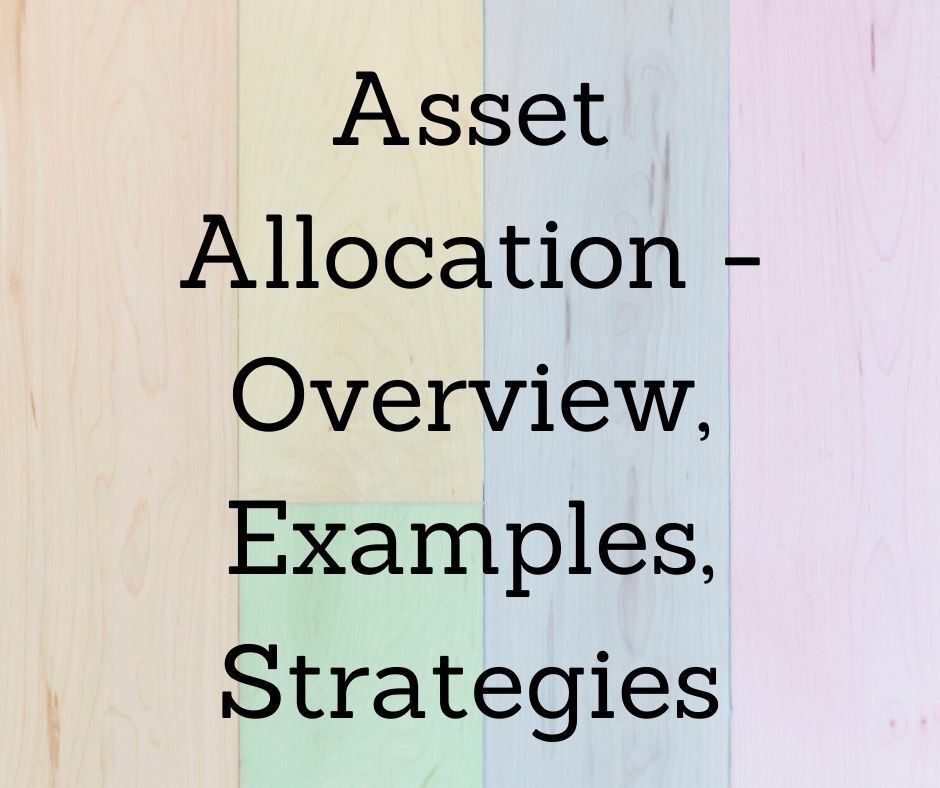Asset allocation – Overview, Examples, Strategies
- 14 July 2020 | 1307 Views | By Mint2Save

Asset allocation is another term used for the diversification of your investments across various investment options or asset classes. In a broad sense, your asset allocation determines how your wealth is distributed among stocks, fixed-income, real estate, and gold. An ideal asset allocation should be a mix of investments ranging from high return (high risk) to low return (low risk) options in order to earn your goal revenue over a period of time. The ratio of your investments across different categories could be based on your risk tolerance level, nearness of your financial goals, or your assessment of the market.
What should asset allocation be?
Most financial advisors believe that asset allocation is one of the most important decisions an investor ever makes. A well-planned asset allocation offers the best protection against a major unforeseen dip in one of the investment classes. This is because an optimal allocation allows you to balance risk by dividing your investments among major asset class categories – each having different levels of risk and return and behaving differently over time. In most portfolios, while one asset category increases in value, the other may decrease (or not increase as much).
In cases where investors throw away the rule book and are driven by inherent biases, it causes an asymmetry in the portfolio leading to sub-optimal outcomes and lower ROIs. Ironically, this usually happens when investment discipline is needed the most. The most recent example is the market crash in March 2020 following the COVID-19 outbreak – while investors should have bought more by hiking their SIPs, many actually withdrew their investments, thus turning short-term paper losses into permanent ones.
Asset allocation is not a one-time decision. Your portfolio (i.e. your investment spread) should be revisited from time to time to ensure your choices still meet your goals and requirements. All asset classes do not move at the same pace or in the same direction. The principle of asset allocation requires rebalancing if there is a portfolio drift. There is, however, no single formula that can find the right asset allocation for every individual. Nonetheless, below are a few important parameters to consider while thinking about deciding an asset allocation:
1. Risk vs Return
The obvious goal of asset allocation is to minimize your risk while trying to maximize (or at least meet) your level of return. To achieve this goal, one should be aware of the risk-return characteristics of various asset classes that are available for investment. The risk-return trade-off for a few common assets classes is as represented below:
High-risk options, such as equities, are more suitable for investors who can tolerate wide swings in the market. A young investor may invest in long-term, high-risk accounts as he/she can expect to recover over time. However, it may not be wise for older investors to jeopardize their accumulated wealth by investing in high-risk options. A rule of thumb is that investors should reduce risk exposure over the years in order to achieve reasonable returns (through safe investments) as they near retirement.
2. Software and Planner Sheets
A financial planning software (survey sheet/app) may give you direction for distributing your investments in various asset classes. However, one should never rely solely on a pre-determined software-generated investment plan. Standard financial advisory algorithms don’t sufficiently capture subjective, yet important, factors such as your family situation (retiree, spouse, parent, etc.) and your financial goals. Such tools only act as rough guidelines rather than full-fledged investment allocation solutions.
3. Have well–defined financial goals
Knowing your financial goals is a precursor to determining your asset allocation. Financial goals may be short-term or long-term – you might be saving for your retirement fund, planning to buy a new house, saving up for your child’s wedding, etc. All these goals need to be considered to choose the right mix of investment options. If your goal is long-term in nature (such as your retirement), you don’t have to worry about short-term market fluctuations and can take higher risks. But if you are preparing for a short-term goal (such as your child’s college fees within the next 5-6 years) you should invest is much safer investments with fixed returns.
4. Time and Age
Having more time at hand allows you to take advantage of compounding and the time value of money. It also means that you can put more of your investments into high-risk (high return) asset classes, such as stocks. A few bad years in the stock market will just show up as an insignificant blip over, let’s say, 30 years of investment time-frame.
Why asset allocation is so important?
To have more time for investment also means that you should start investing early in life. It is said that for every 10 years you delay saving for retirement (or some other long-term goal) you need to save thrice as much each month to catch up. A commonly cited rule-of-thumb to simplify asset allocation states that one should hold (100-age) % of stocks in equities and rest in bonds, debt, and other relatively safer assets. Many investment professionals argue that this axiom puts an investor in the jeopardy of running low on funds during later years in life. Some have even modified the rule to “(110 or 120) minus your age” for those having a higher risk tolerance.
To make asset allocation easier and more intuitive for clients, many investment firms have created model portfolios, each comprising a different proportion of asset classes with varying degrees of risk tolerance. A conservative portfolio is more inclined towards lower-risk options such as fixed income and money market securities. A conservative portfolio, in essence, is the safest mix of options to protect the principal value of your investments.
What is the safest asset to own?
The safest investments are in a savings account and fixed-income deposits such as Bank FDs and RDs, Provident Funds, Pension Schemes, Gold, and Equity-linked saving schemes (ELSS). In general, Indians prefer government-backed investment options as these are considered comparatively safer avenues. Even though Indians are traditionally conservative investors, the trend is changing of late. An aggressive capital growth portfolio mainly comprises of high-return investment options such as mutual funds, direct equity investment, RBI bonds, bank deposits, and real estate. These asset classes carry considerable risk and their value fluctuates widely in the short-term.
What is the best asset?
The best asset or the best asset allocation strategy is, however, investor-specific. While on one hand, those with a longer time horizon and larger funds to invest may feel comfortable with high-risk, high-return options. On the other hand, investors with lesser funds and shorter time spans may prefer low-risk, low-return allocations. Conservative and Aggressive investment options are two extremes of the risk spectrum associated with your investments and only offer a loose guideline. The most suitable portfolio needs to be tailor-made and fine-tuned after considering the aforementioned parameters.
The amount of money you devote to cash vs money market instruments will also depend on your liquidity and financial safety requirement. Once your portfolio is up and running, it’s important to periodically review your portfolio vis-à-vis changes in your life and financial requirements. You may need to re-balance your portfolio whether or not your priorities have changed. All in all, asset allocation is the only means to the end – maximizing profits while minimizing risk to fulfill your long-term investment goals.










